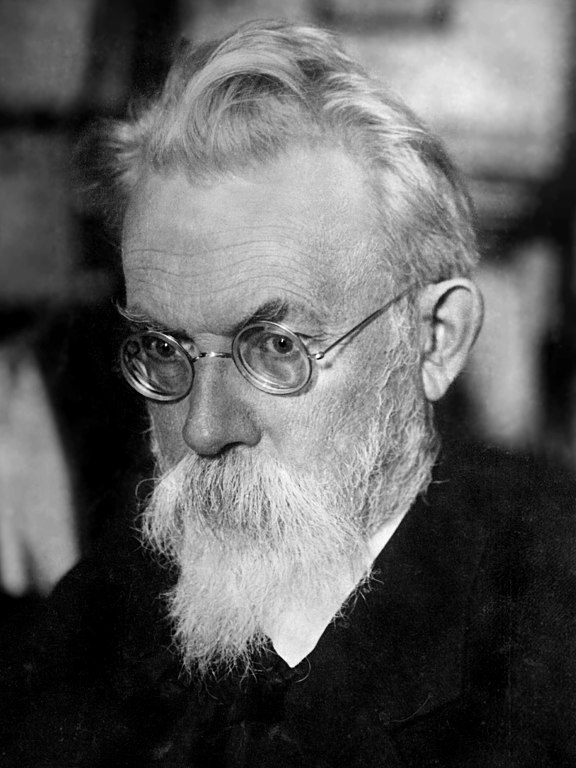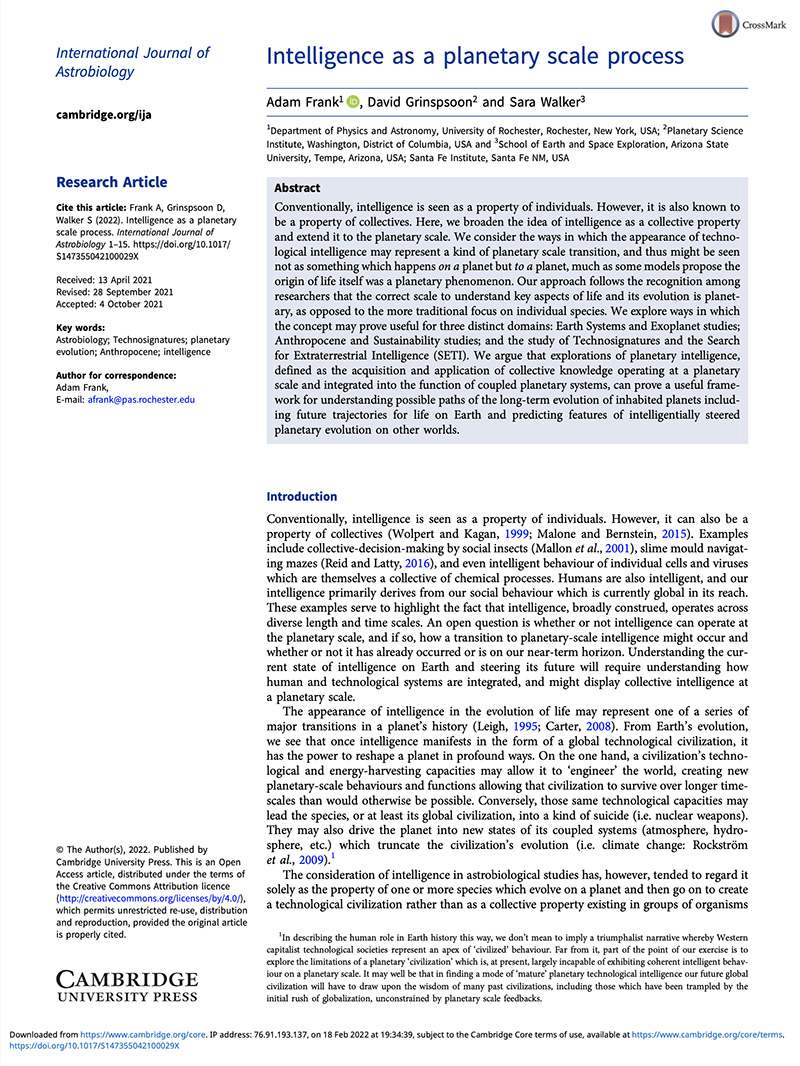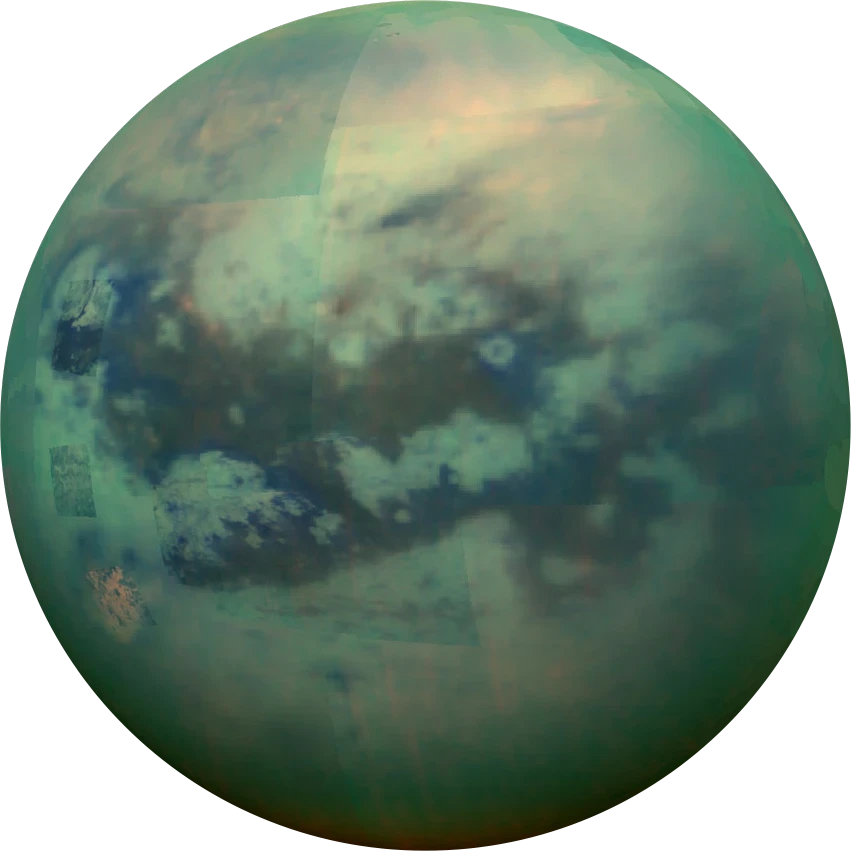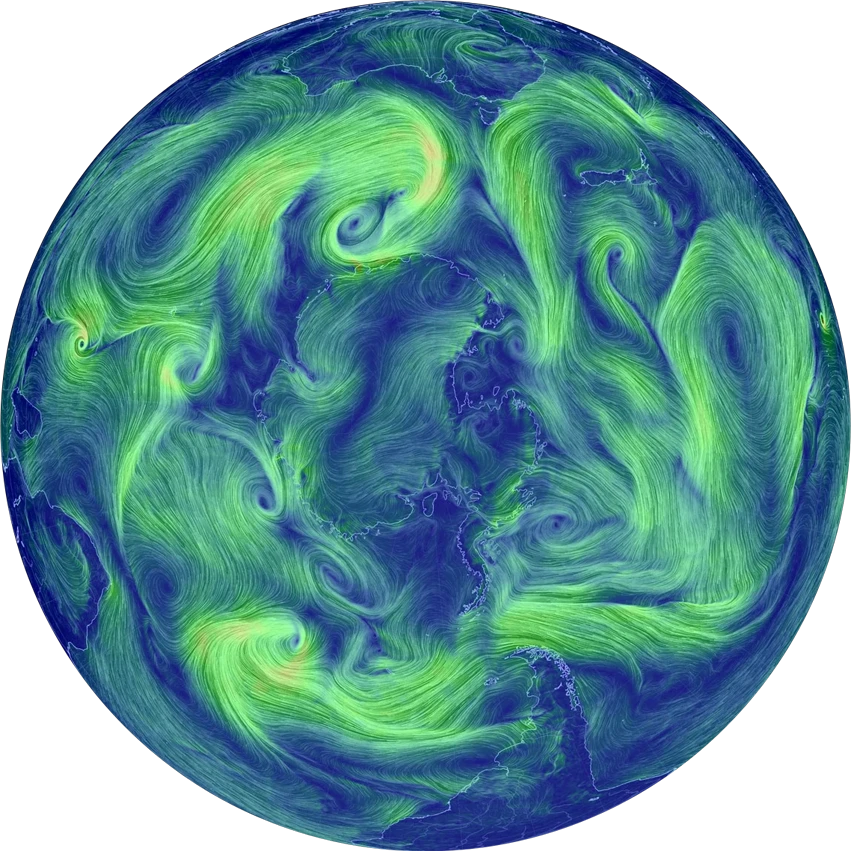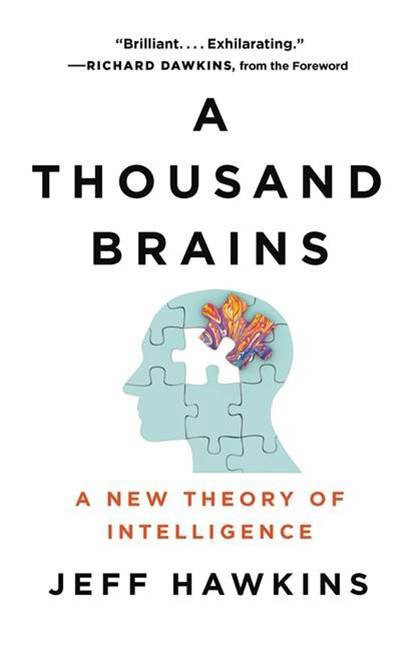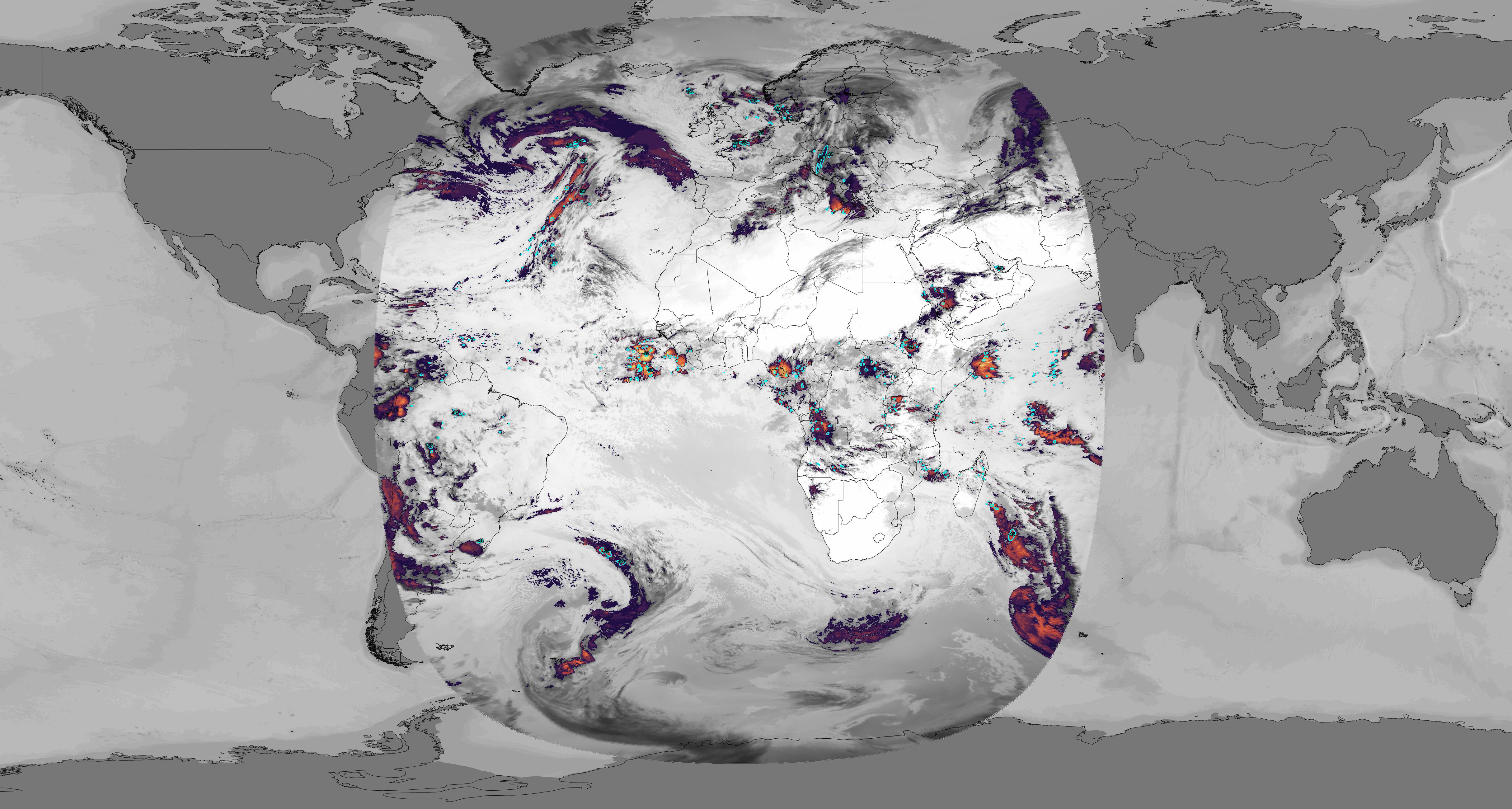
2.1 Planetary intelligence and autopoiesis
The Infinity Mirror project aims to illustrate the role of simulation as a fundamental aspect of planetary intelligence—to chronicle its artificialization and emergence from human behaviors in technical form, expanded and ultimately integrated at a planetary scale. Indeed, it was simulations in the form of global climate models that enabled us to foresee the looming crisis from the 1970s onward. Likewise there can be no response to climate change and other existential threats without including new models of Earth’s coupled systems as mechanisms to recognize and halt emerging threats.
It was the Russian Ukrainian mineralogist Russian-Ukrainian mineralogist Vladimir Vernadsky who first argued that the sum of biological activity on Earth (the biosphere) should be considered a geological force with the power to change other systems with which it is inextricably coupled: the hydrosphere, cryosphere, lithosphere, and atmosphere. Later on, Vernadsky added another system—that of “cultural biogeochemical energy”—with equivalent power to bring about changes at a planetary scale.
Vernadsky adopted the term noosphere from the French Jesuit priest Pierre Teilhard de Chardin to describe the sum of collective cognition. The concept incorporates pre- and post-technological information processing, meaning it includes everything from organizational interactions among social insects to beavers constructing dams, and news updates spreading across social graphs to artificial neural networks.
An influential paper published in the International Journal of Astrobiology works on the assumption that intelligence is not a property of individuals as conventionally understood, but derives from collective behavior in the biosphere—not something that happens on a planet but to a planet. Astrophysicist Adam Frank, NASA astrobiologist David Grinspoon, and theoretical physicist-turned-astrobiologist Sara Walker, co-authors of this paper, go on to define planetary intelligence as “the acquisition and application of collective knowledge, operating at a planetary scale, which is integrated into the function of coupled planetary systems.”6 Whether this takes place within biospheres or technospheres, without simulation this would be impossible.
Their paper adapts five possible properties required for a world to show cognitive activity operative across planetary scales. The last of these is autopoiesis—meaning “self-making” of “self-producing”—referring to a system’s capacity to establish “organizational closure” and maintain itself despite fluctuations and perturbations. They emphasize that “life is a process of maintaining an identity from within,” but that this unity is never static. The organism must “operationally reconstitute itself. It must continually create the conditions for its own existence via metabolism. If the dynamic falters or stops, the organism dies.”
2.2 Major transitions
Here it is useful to schematize the distinction between collective processes in the biosphere that are capable of exerting force on coupled planetary systems and anthropogenic forcing as a result of burning hydrocarbons (part of the general capacity of humans to act collectively and engineer their environment).
The biosphere represents a complex network of feedback loops that use signals such as incoming sunlight, or the abundance of a specific element, to modulate behaviors, curbing effects in service to a steady state. This learned behavior is dependent on knowledge born from many millions of years of trial and error—an evolutionary dynamic that contains and predates biotic life.
In a 2018 paper, Frank and colleagues proposed five classes of planet according to the degree of thermodynamic complexity exhibited in their coupled systems.7

Moving up the classes from I to IV, the energy available to do work increases with the addition of an atmosphere—and subsequent thin and thick biospheres—as disequilibrium between coupled systems rises. A speculative class V planet would be one that contains a technological civilization that has entered into a stable relationship with the other coupled systems of its host world, acting with intention to maintain and develop the biosphere from which it emerged and on which it depends for its continued existence.
In their 2022 influential paper, Frank et al. call this moving up the scale a transition from an “immature technosphere” to a “mature technosphere,” incorporating feedback loops and reducing forcing timescales, much in the way that Earth did when it transitioned from being an immature biosphere during the Archean (with insufficient feedbacks between life and geophysical coupled systems to exert strong co-evolution) to the Proterozoic era, when the biosphere began to exert strong forcing on the planet’s geophysical state, establishing full co-evolution of the entire system.8
According to geologist Peter Haff, technospheres refer to the activities of civilizational intelligence, a synthetic corona that metabolizes fossil fuels and includes “communication, transportation, bureaucratic and other systems.”9 On a planet with an immature technosphere, this activity risks shifting coupled planetary systems into new dynamical states with no capacity to regulate them and guarantee the health of the civilization building the technology. By comparison, a planet with a mature technosphere contains feedback loops intentionally modified to ensure the maximum stable productivity of the full system.
A mature biosphere is more stable than an immature technosphere, yet only a mature technosphere can extend itself far enough in time to become significant to the search for extraterrestrial intelligence. “Contact inequality,” whereby the probability of contact is proportional to the age of the intelligence being detected, makes it likely that exo-civilizations will be older than those carrying out the search. As such we may be able to identify generic features in the evolution of intelligence that will prove relevant to astrobiology and the search for extraterrestrial intelligence. Long-term in this context does not refer to a geological era such as the Anthropocene, but rather a new eon that could stretch hundreds of millions of years into the future.
2.3 How Earth becomes Class V
The arrival of a civilization capable of guaranteeing its own continuation is clear evidence for the existence of planetary intelligence. There was some evidence that by the year 2000, Earth was already well on its way. For example, the coordinated global response to chlorofluorocarbon use in the 1990s, or the growth of planetary asteroid defense systems (of which NASA’s double asteroid redirection test of deflection in 2022 was an example) , might be ranked alongside nuclear arms treaties, vaccine development, and adaptation to natural disasters as examples of nascent planetary intelligence responding almost in tandem with emerging threats from within and without.
The response to anthropogenic climate change needed to be radically quicker than, say, Earth’s recovery from an ice house state produced by microorganisms evolving to process trapped carbon and release it. Critically, some of the best models for network environment regulation were to be found in other evolved systems—including the human brain.
Simulations are vital tools for processing semantic information as it flows across the planet’s geosphere, biosphere, and technosphere.10 Much like the information networks of our own brains, they are sites of active inference in which new knowledge is assimilated and made accessible for utilization as part of a constantly shifting array of predictions.
2.4 Three-Dimensional Prediction Engines
As it develops, the human brain constructs an incredibly complex model of the world. This model is the basis for all of our predictions, perceptions, and actions. When attempting risky maneuvers in a flight simulator, for example, a pilot creates new connections in their neocortex, a frame of reference they can call on should they ever need it (outside the simulator) in the future.
Our brains calculate the relative position of our bodies in the environment, but also the relative positions of other objects to each other, all of which is constantly on the move. A similarly spatialized process is at work for higher order concepts such as democracy, space flight, or envy, making thought a kind of movement. In each case, our world model—our expectations about the world—becomes the basis for planning. Comparison with sensory data causes the model to update automatically.
Predictive coding in neuroscience maintains that the reality we experience is built from mental models that we update when our best guesses miss the mark. This is why in functional magnetic resonance imaging, unexpected inputs lead to much higher rates of brain activity. Whether the scale is personal or planetary, planning is an attempt to resolve ambiguities about the future and minimize errors. The two are fundamentally linked. As cognitive philosopher Andy Clark has argued: “Minds are not merely what brains do. They are what brains create—distributed cognitive engines spanning brain, body, and world.”11
The basis for predictive coding emerges in the microcircuitry of cortical columns: the 2.5-cubic millimeter cylinders that comprise the neocortex, the most recently evolved outer layer of the mammalian brain folded up inside the skull like a napkin in a wine glass. The columns consist of groups of neurons. Of the many billions in each human brain, just 2 percent of neurons are active at once. This 2 percent is everything you think and perceive.

Cells within columns are networked vertically, up and down, but also at great distance across the brain or down the spine across the nervous system. Crucially, cortical columns appear to operate the same regardless of which region (visual, touch) they are found, constituting a universal modeling toolkit (language, music, mathematics) that creates predictions. When a pattern of activity is recognized, dendrite spikes raise the voltage in a cell putting it into a predictive state. This is before the cell spikes, ensuring that the predictions we make are not experienced as hallucinations.
Although the precise evolutionary story of the neocortex remains the subject of some debate, neuroscientist and co-inventor of the Palm Pilot Jeff Hawkins argues it may have emerged from an increase in map-creating neurons in the much older hippocampus and entorhinal cortex in mammalian brains. These structures contain grid cells whose activity seeks to mirror minute details of their environment. In studies of rats moving through a maze, brain activity remained similar so long as they took the same route. When a new journey path opened up, a new pattern of activity (a new reference frame) was created, like arriving in a new city or entering an unfamiliar house.12
2.5 Map makers
In A Thousand Brains: A New Theory of Intelligence (2021) , Hawkins argues that “it is as if nature stripped down the hippocampus and entorhinal cortex to a minimal form, made tens of thousands of copies, and arranged them side by side in cortical columns.” To become an expert in any domain requires the creation of a highly detailed mental map. Within that map, or simulation, are multiple further simulations that we open a little like hyperlinks on the web.
Cortical columns enact a sensory–motor process according to the region through which sensory data arrive, but knowledge of objects is distributed by its relationship to other reference frames—similar to how neurons use many synapses and a network of neurons is never dependent on a single cell. Strokes can knock out multiple cortical columns and the brain will continue to function because it is a complex adaptive system. This is similar to how Adam Frank and colleagues predicted planetary intelligence would most likely be collective (rather than centralized) in nature because of how intelligence appears as a feature of eusocial species like ants, termites, or humans on Earth.
There is a limit to the number of objects a single cortical column can learn, but across the vast network of axons and synaptic terminals the number grows exponentially. Hawkins proposes that we alight on a single perception from the many ghost simulations contained in our brains through a process of voting.
Using its long-range connections, a column broadcasts what it thinks it is observing. Often a column will be uncertain, in which case its neurons will send multiple possibilities at the same time. Simultaneously, the column receives projections from other columns representing their guesses. The most common guesses suppress the least common ones until the entire network settles on one answer.13
Given that 90 percent of the neocortex—traditionally considered the seat of intelligence—maintains sub-perceptual processes like breathing or digestion, intelligence may be better understood as predictive monitoring and self-maintenance, making the conventional focus on problem solving an extension of this process.
It was in the conspiracy of neurons and brains that intelligence first became aware of itself. Yet it took a long time for theories of how they build and operate a model of the world to emerge, a crucial benchmark in the prehistory of the Infinity Mirror. Much as a child learns a model of the environment—locating possible threats and sources of nourishment—the planet’s Anthropocene-era technosphere built many thousands of spatialized models, some critical, others less so, in the form of computer simulations. And just as with children, the ability to build those models within the twin arenas of competition and play, dynamics which would prove crucial to the character and function of the Infinity Mirror.
